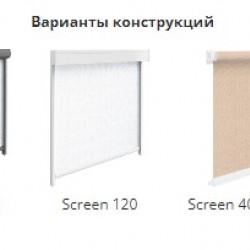Protective screens, zip screens and vertical awnings are various types of structures that can be used to protect against sun, wind, rain and insects in outdoor areas or terraces.
Protective screens are structures that are installed in open areas to protect from the sun, rain, wind and insects. They can be made from a variety of materials such as fabric, plastic or metal and can be fixed or mobile. Protective screens can be installed on the frame or against the wall of the building.
Zip screen is a design that is a vertical roll screen equipped with a special zipper that tightly fixes the screen fabric on the rails. This allows you to create an almost hermetically sealed space that protects from the sun, wind, rain and insects. Zip screen can be installed both indoors and outdoors.
Vertical canopies are structures that are installed in open areas to protect from the sun, wind, rain and insects. They consist of vertical fabric panels that can be raised or lowered to control the amount of light and air passing through the structure. Vertical canopies can be installed on the frame or against the wall of the building.
In general, the choice between privacy screens, zip screens and vertical awnings depends on your needs and preferences in terms of functionality, appearance and degree of protection.
Automation elements are devices and systems that automatically control various processes and devices. They can be used to automate various tasks in residential, commercial and industrial facilities.
In the context of window and door systems, automation elements can include:
Electric drives for window and door structures are devices that automatically open and close windows and doors. They can be controlled by a switch, remote control or smartphone.
Sensors that can detect temperature, lighting, wind speed and other parameters. They can be used to automatically control windows and doors in response to changing environmental conditions.
Automatic control systems are systems that can automatically control window and door structures based on specified parameters. For example, they can automatically close windows and doors when rain or strong winds are detected, or open them to ventilate the room under certain conditions.
Security systems are systems that can keep the premises and occupants safe. These may include smoke and carbon monoxide detectors, warning systems, access control systems, and other elements.
Motorized blinds, roller shutters and curtains are devices that can be automatically controlled to regulate light, temperature and privacy in a room.
In general, automation elements can improve the usability, safety and efficiency of window and door systems. They can be especially useful for people with disabilities and for those who want to automate routine tasks in their home or office.






















